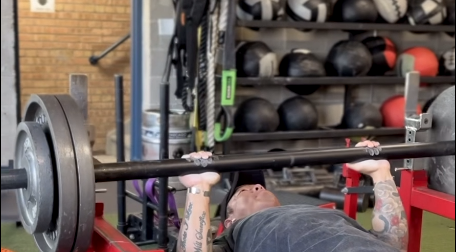Pages 18-19, Answering the Call: Proper Physical Training for Police and Military in the in the 21st Century
One of the most overlooked pieces to strength and conditioning is long term training and why I needed to get a bit older to find why Dan’s work is so valuable. With age comes wisdom. His park bench vs bus bench metaphor started to make more sense as I transitioned from somebody who liked to work out to somebody who actually wanted results. Or in other words when I actually needed to hit specific standards, like during Ranger Assessment and Selection or during Ranger School. When you have to hit certain numbers to be selected into something, your mindset totally changes.
Another part of the journey that escapes many, is the transition that happens after you get selected or you are at the police department and finally made the SWAT team. You got in great shape preparing for selection so is it not common sense to just keep training the same way? I would say no. I had great results from the work Craig Weller had me do in my preparation leading into the military. However, when we look long term the volume is just not sustainable for most. Especially with the training cycle or the day to day grind of policing. Another reality for these professions is your job schedule, training, and deployments will all get a vote as to how physically fit you are in a given time period.
You will constantly go up and down with strength and fitness. It can get very frustrating when you’re finally getting your strength numbers up and then all of a sudden you go away for a month and spent half of that time eating and sleeping poorly. Even if you had time to work out you probably wouldn’t make much progress. It is just the reality of the job sometimes.
This all could be described as periodization. Or in this context almost a forced version of periodization. Professionals like Dr. Vladimir Zatsiorsky, Dr. Michael Yessis, or the late Dr. Mel Siff explain this in great detail in their works. If you are interested please read some of their works like the “Science and Practice of Strength Training” or “Supertraining”. These individuals resumes and contributions to strength and conditioning are truly absurd.
Dr. Zatsiorsky is a world renown strength and conditioning expert who in a former life was a consultant for the Soviet Union Olympic teams. Dr. Mel Siff passed away in 2003, but was another trailblazer in this field. Dr. Siff was a South African Strength coach and researcher who worked with Dr. Michael Yessis. Dr. Yessis is an American researcher and sport consultant who also has also worked with the highest of caliber Olympic athletes. Dr. Yessis and Siff translated much of the old soviet research and methods and were able to bring these ideas to the West.
The Soviets, with all their obvious flaws were hard to match regarding the large populations they studied and mounds of data they were able to produce. The gentlemen above used that data to help shape the strength and conditioning world to who knows what ends. A book could be written about these individuals on its own, and I am pretty sure between the two books above you will cover anything you would ever want to know about training. The key as to why I believe these researchers are held in such high regard, is not only do they have the research background, but they also applied this knowledge over several years of practical application. They didn’t just lock themselves in academia and hide behind theories...they were/are part of the “doers” in this field.
Many great coaches have simplified or mainstreamed some of these concepts. Louie Simmons, the late founder of West Side Barbell, touches on this dynamic as he made the concept of accommodation widely known. The idea that if you do the same thing too long one will stagnate. This typically is where injuries and burnout happen. Charles Staley, another talented strength coach, who has written some of the most practical articles on this topic, calls this broken paperclip syndrome. He explained this as if you continue to bend a paper clip in the same spot over and over again at some point it breaks. Dan John says “specificity works- but at a price.” A consistent trend with some really smart people.
This doesn’t mean hop to different programs every day or week but there is a difference between the day to day fitness of a police officer and one that is getting ready for SWAT selection. There is a difference between the day to day fitness of combat arms soldier and one that is getting ready to attend Ranger Assessment and Selection (RASP), Ranger School, or Special Forces Assessment and Selection. There is even a difference between a soldier or police officer who works a desk and has now decided to get ready for RASP or SWAT. Periodization doesn’t have to get too complicated because we are too complicated to ever be on the perfect program.
We also aren’t training for the Olympics nor do any of us have a staff of coaches and scientists to monitor our training. What is even more insane is that athletes who have these resources still sometimes fail to peak for their events. The other reality for tactical types, unless we are attending a selection or school we really aren’t peaking for anything. We have to maintain a high level of readiness. This is where little and often over the long haul is typically the better approach.
Especially for the older members of the tactical world, most of your time is a “maintenance” phase. It is as simple as having one or two goals and getting after it with reasonable volume. Maintain the other qualities you build others. Let each phase or block build on one another. This could be as simple as focusing on strength and aerobic capacity, and later maintaining that strength while focusing on harder conditioning. Then coming back to more traditional strength work as the focus with more reasonable conditioning volume. After a few months of some of this programming, you finally get your shot to head to SWAT selection and you get your date of assessment. Now work backwards from that date and start your more specific train up.



